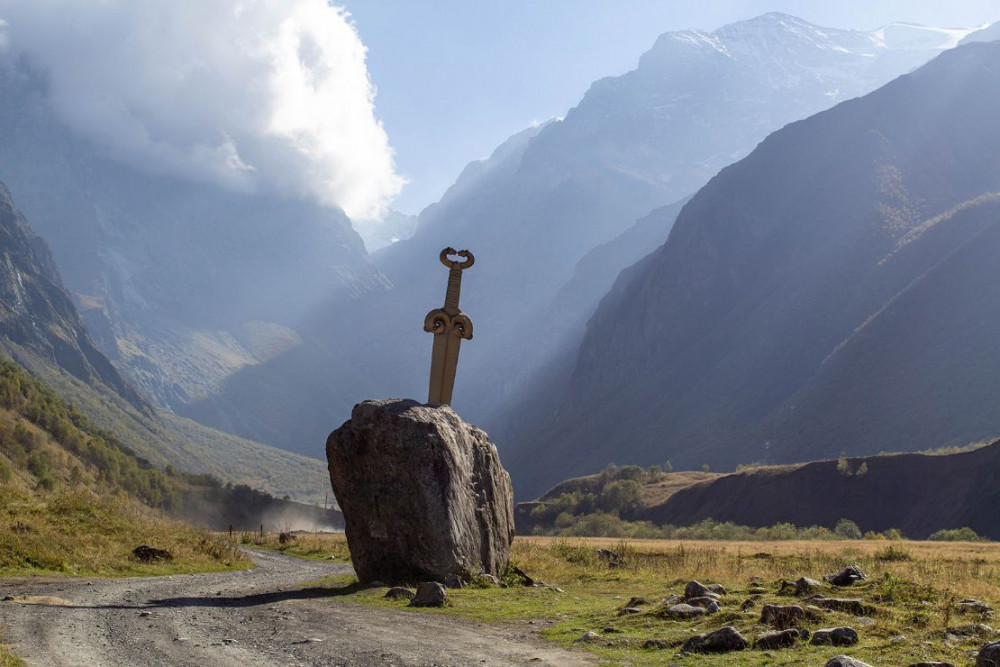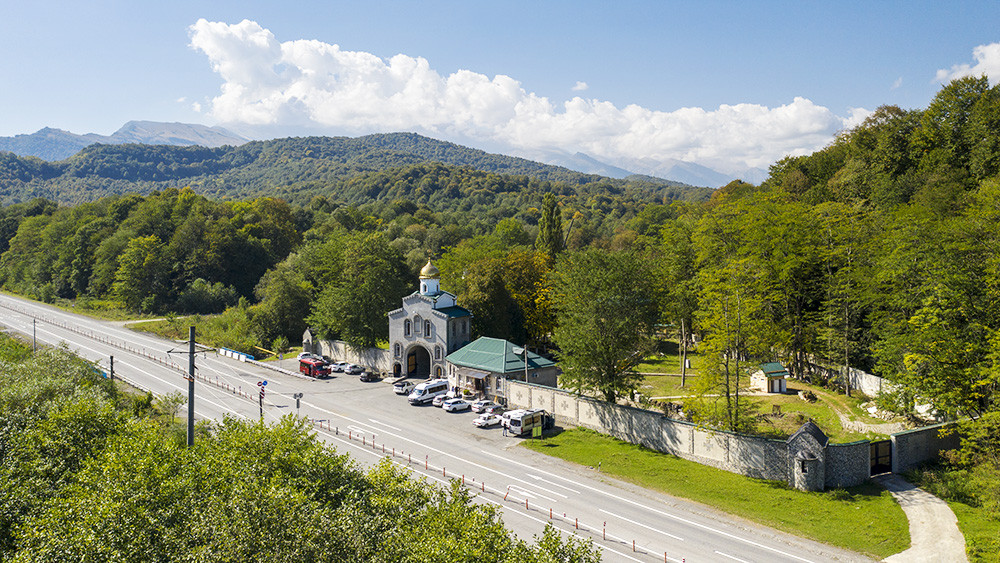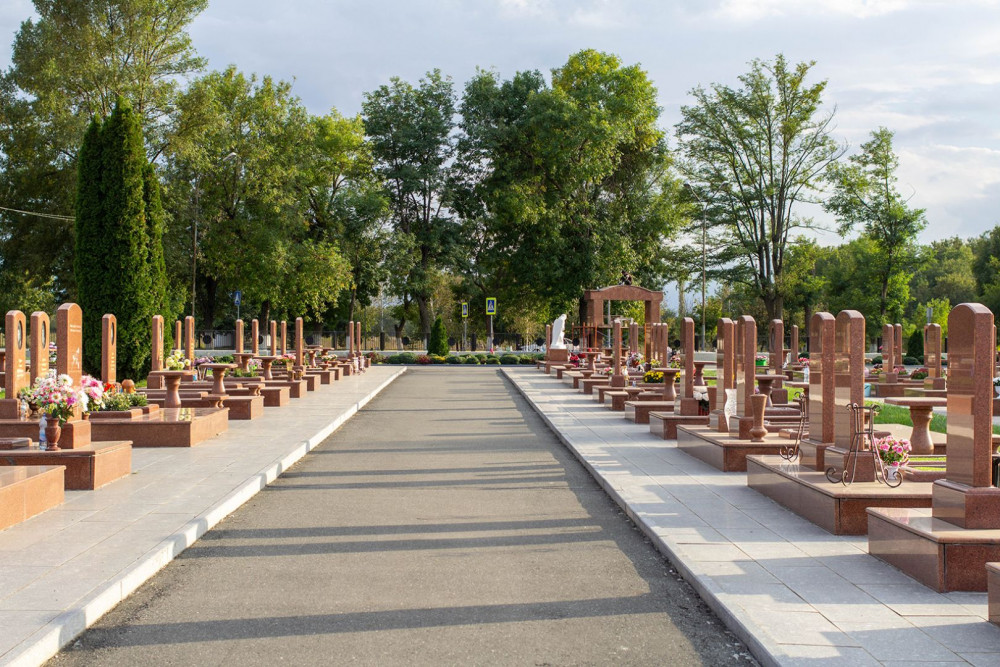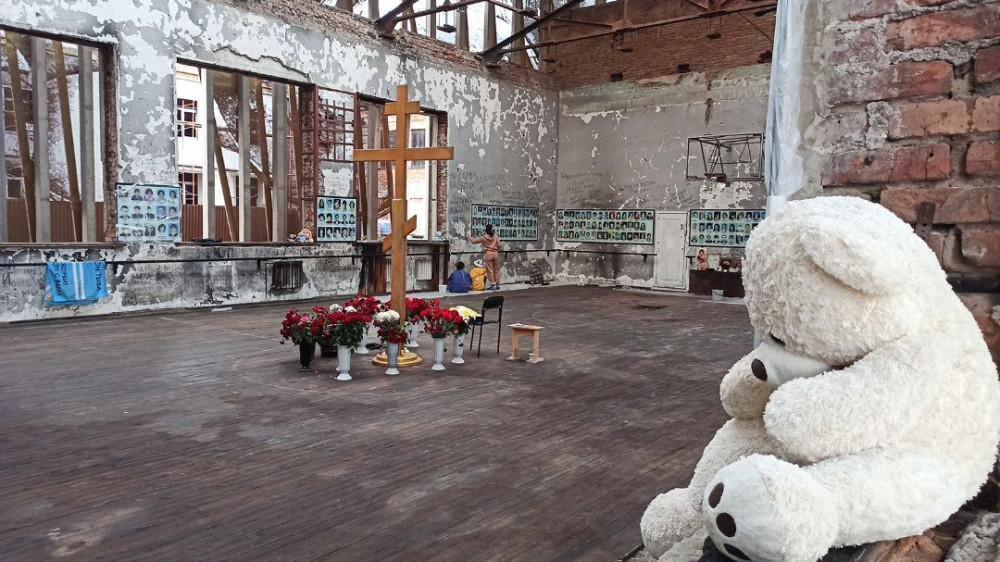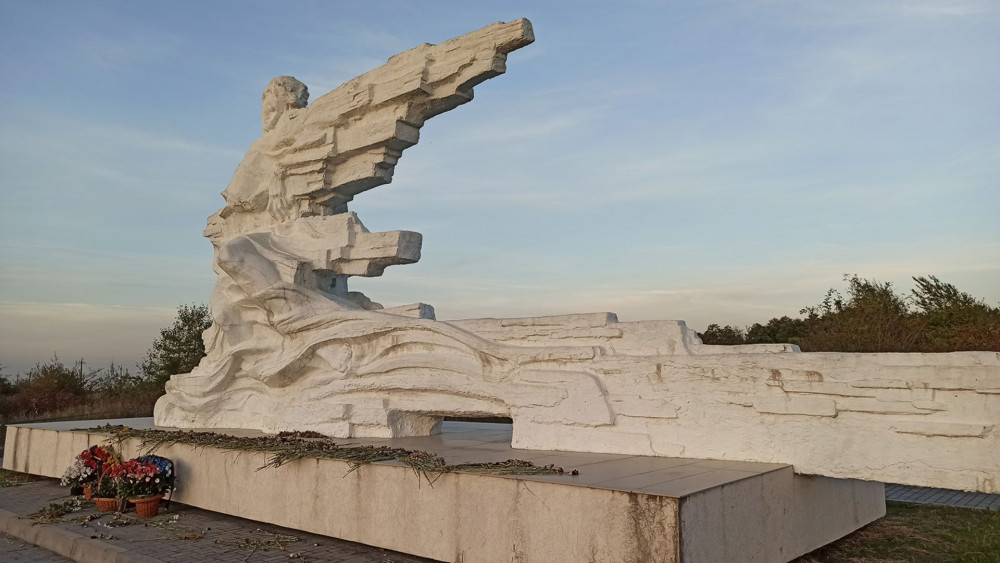Churches and Monasteries of Ossetia From a Bird’s Eye View
Northern Ossetia… Mountain passes that enchant you with their seemingly unreal beauty; it is rivers and waterfalls. And mainly, it is mountains that astound with their grandeur, that you could just gaze at forever—no matter what time of day and no matter what the weather. Because it’s… the Caucasus!
And of course, Ossetia has the most ancient churches in Russia.
Chapel of the Iveron Icon of the Mother of God. Kuratinsky Pass
At five kilometers from the men’s monastery in the high mountain Kuratinsky Pass of Northern Ossetia is a chapel that for 600 years has sheltered the main holy icon of Ossetia and all of the northern Caucasus Mountains—the Iveron Mozdok icon of the Mother of God, which was gifted to Holy Right-Believing Queen Tamara the Great (thirteenth century). After the death of her first husband, the Russian Prince George Andreyevich, son of the famous Andrei Bogoliubsky, Queen Tamara married the Ossetian prince, David-Soslan.
The Tkhaba-Erdy Church. Ingushetia
Tkhaba-Erdy is an ancient Christian church in Ingushetia. It is part of the Dzheirakhsko-Assinsky national historical-architecture and nature preserve. Scholars are not unanimous about the dates of the church’s construction. The majority of them distinguish several periods of its construction, the earliest of them often going back to the eighth century. That is why the Tkhaba-Erdy Church is often called the most ancient church on the territory of Russia.
The Alan-Dormition Monastery. Khidikus
The Alan-Dormition men’s monastery is located next to the village of Upper Fiagdon in the Kuratinsky Pass (Alagir region of Northern Ossetia). This is the highest mountain Orthodox monastery in the territory of Russia.
It was founded in the year 2000.
Uastyrdzhi
Uastyrdzhi is the protector of men, travelers, and warriors. In the Narts epos, Uastyrdzhi is described as a dweller of heaven and is depicted as an elder on a white horse, dressed in a white cloak. When he comes down to Earth, he checks to see if people are helping each other in their needs and sorrows.
The monument to Uastyrdzhi is located in the Alagir Pass. It is one of the largest horse and rider monuments in the world. It weighs twenty-eight tons.
The Church of Archangel Michael. Upper Mizur
This church was built in 1890. It is the highest mountain church on the territory of Russia. It has been restored and holds services.
The Alan Theophany Convent. Alagir
The Alan Theophany Convent was founded in 2004. In 2001, at the blessing of Metropolitan Gideon, the Holy Dormition Orthodox sisterhood was founded in Alagir, as the start of the future convent. From the beginning, the sisters lived the skete life. In 2004, the government of the Ossetian Republic granted ten hectares of land for the construction of a convent and gave them the territory of a former Pioneer camp. On July 12, with the blessing of Bishop Theophan, the sisters moved to their new home. The convent is currently building a church and repairing the living quarters.
The Ascension Cathedral. Alagir
At the behest of the Russian Emperor in February 1850, it was determined that the Alagir silver and zinc plant be built in Ossetia, based on the Sadon non-ferrous metal deposits. The settlement that grew near the plant was called Alagir. In November 1851, the foundation of the Holy Ascension Cathedral was laid. Prince G.G. Gagarin, a famous Russian architect and artist, was the church architect and creator of the first wall paintings. The Cathedral was built in the Byzantine style from local materials—rose-gray limestone.
Church of St. George the Victorious. Dzivgis
In the hamlet of Dzivgis is one of the most ancient churches of Northern Ossetia—the Church of St. George the Victorious. It was built sometime in the fourteenth to sixteenth centuries. On a special archway hang two main relics of the church—the bells donated by the Georgian Kings George and Archil in the years 1613 to 1683. The inscription on the first bell reads, “We, sovereign of Kartli, King of kings, patron George, have donated this bell to you, St. George of Dzivgis, for the sake of our victories. Chronikon 301”. On the second bell is the inscription: “I, King Archil, have brought this bell to the cross-reliquary of Dzivgis: May God grant that at its voice, Ossetians would come to glorify the Trinity.”
The Church of the Dormition of the Most Holy Theotokos. Lisri
The construction of this church dates to the late nineteenth, early twentieth centuries. The Dormition Church in Lisri is generally said to be among the latest to be built in the Mamison Pass. However, the first known documented testimony to the beginning of the Orthodox Church in Lisri dates to 1852. This is in the documents of the Ossetian spiritual mission.
The tower complex of Ezri. Ingushetia
The towers of Ingushetia are a unique phenomenon in world culture. According to one of the most eminent Caucasus scholars Evgeny Ignatievich Krupinov, “The Ingushetia military towers are in the true sense the height of architectural and structural mastery of the region’s ancient population. They are amazing for their simplicity of form, monumentalism, and austere elegance. The Ingushetia towers were, for their time, a true miracle of human genius.”
Beslan. School No. 1., site of the terrorist attack on children
The “Kolka” glacier retreat









